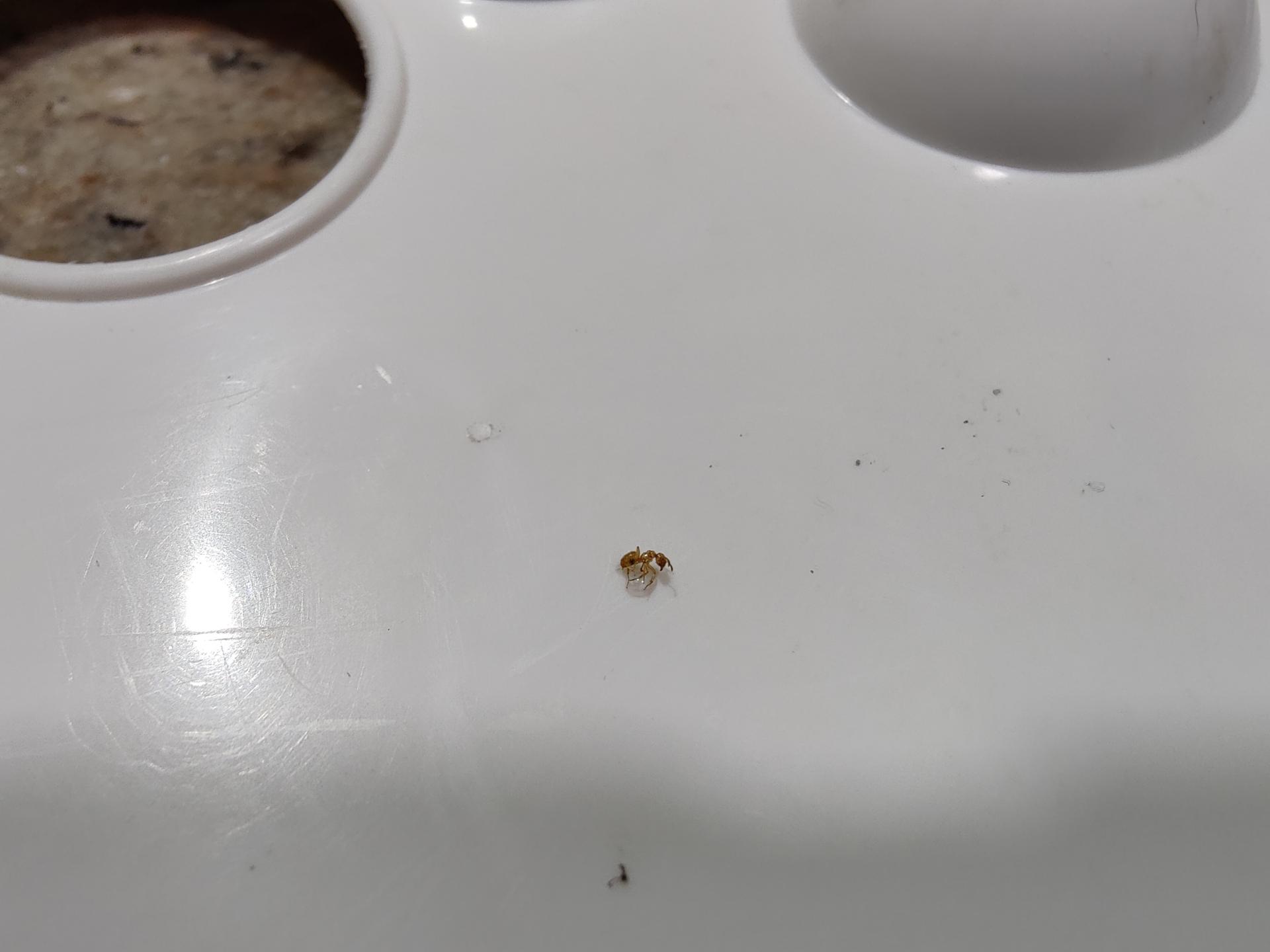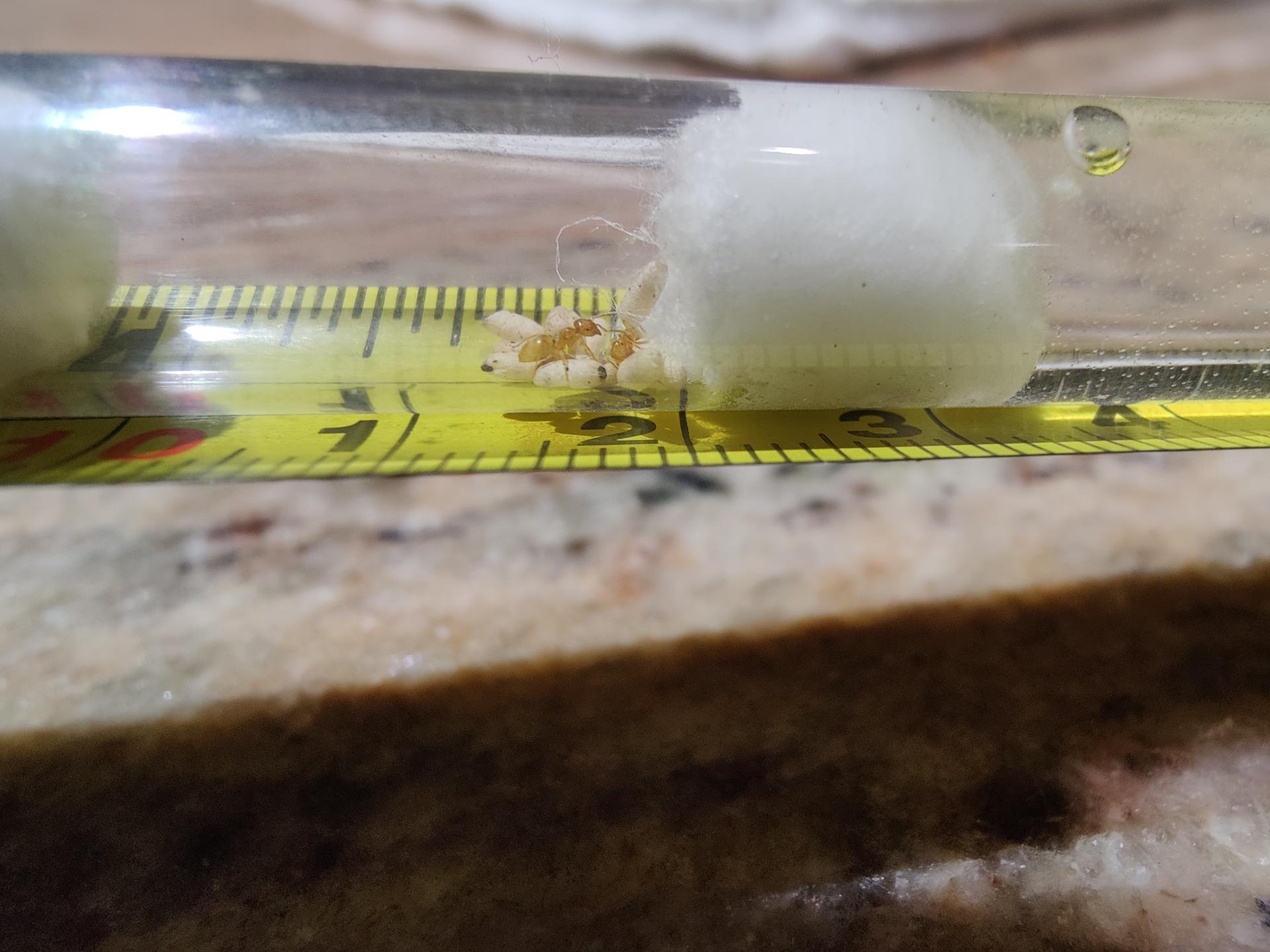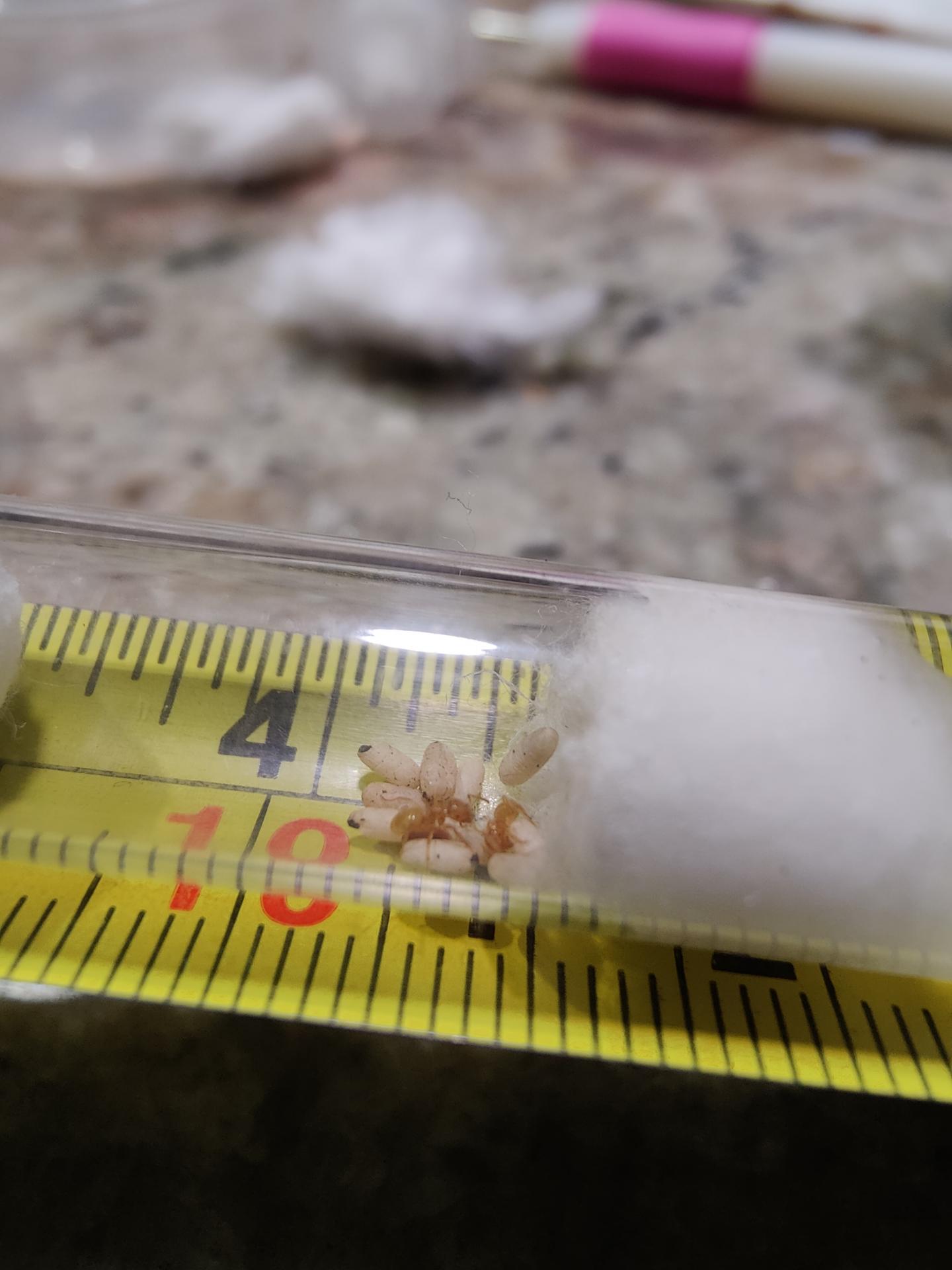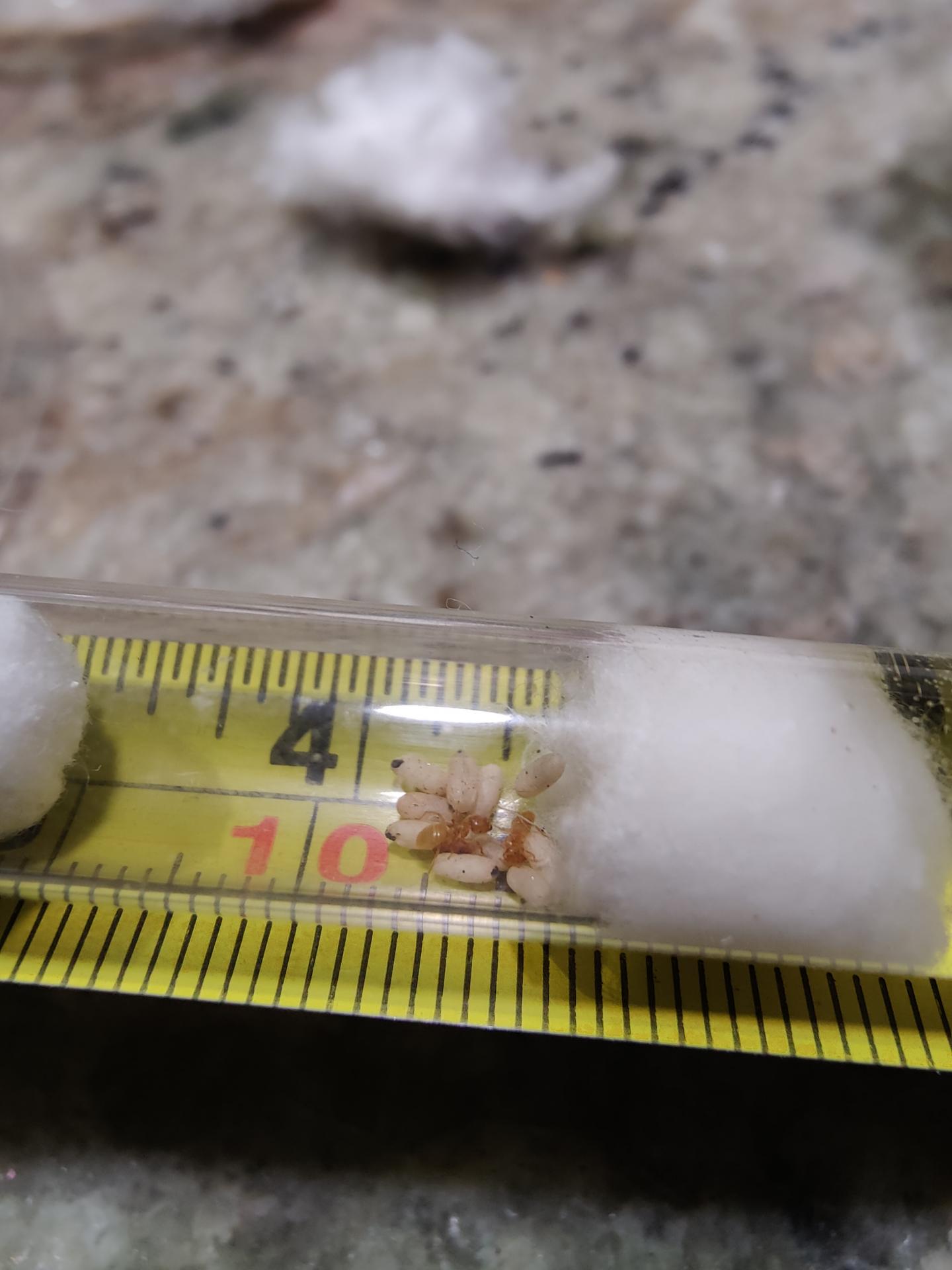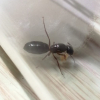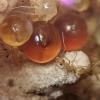- Formiculture.com
- Forums
- Gallery
- Members
- Member Map
- Chat

Little ants
Started By
smares
, Jul 17 2021 9:58 PM

Best Answer NickAnter , July 18 2021 - 7:14 AM
I think Lasius is as far as you can go with these. IDing Lasius is almost impossible without a microscope. They are definitely a parasitic species however, and there are many similar species in CO.
Go to the full post
3 replies to this topic
#1
 Offline
-
Posted July 17 2021 - 9:58 PM
Offline
-
Posted July 17 2021 - 9:58 PM
Found on 7-17 in Lakewood Co under medium sized river rock. They were in a sandy outcrop near a river/ forest area. They are a very light orange color and have very tiny eyes. From what I saw they seem to have small colonies. They are too small for me to tell if any of them are queens or just workers. I'd guess the pupae are alates.
#2
 Offline
-
Posted July 17 2021 - 10:00 PM
Offline
-
Posted July 17 2021 - 10:00 PM
I'm gunna say it's Lasius claviger. All of the ants are workers.
Edited by SYUTEO, July 17 2021 - 10:01 PM.
- TestSubjectOne and Antkeeper01 like this
#3
 Offline
-
Posted July 17 2021 - 10:09 PM
Offline
-
Posted July 17 2021 - 10:09 PM
I'd agree with Lasius claviger. They're too big to be Brachymyrmex depilis.
- Antkeeper01 and SYUTEO like this
TestSubjectOne's Experiences in Antkeeping General Journal
Currently Keeping:
- Veromessor pergandei (1 queen, 600 workers)
- Novomessor cockerelli (1 queen, 200 workers)
- Myrmecocystus mexicanus (1 queen, 100 workers)
- Brachymyrmex patagonicus (3 queens?, 2,000 workers? & alates)
- Crematogaster sp. (1 queen, 600 workers)
- Liometopum occidentale (1 queen, 800 workers)
- Camponotus absqualator (1 queen, 130 workers)
#4
 Offline
-
Posted July 18 2021 - 7:14 AM
Best Answer
Offline
-
Posted July 18 2021 - 7:14 AM
Best Answer
I think Lasius is as far as you can go with these. IDing Lasius is almost impossible without a microscope. They are definitely a parasitic species however, and there are many similar species in CO.
- Antkeeper01 and SYUTEO like this
Hi there! I went on a 6 month or so hiatus, in part due, and in part cause of the death of my colonies.
However, I went back to the Sierras, and restarted my collection, which is now as follows:
Aphaenogaster uinta, Camponotus vicinus, Camponotus modoc, Formica cf. aserva, Formica cf. micropthalma, Formica cf. manni, Formica subpolita, Formica cf. subaenescens, Lasius americanus, Manica invidia, Pogonomyrmex salinus, Pogonomyrmex sp. 1, Solenopsis validiuscula, & Solenopsis sp. 3 (new Sierra variant).
1 user(s) are reading this topic
0 members, 1 guests, 0 anonymous users




